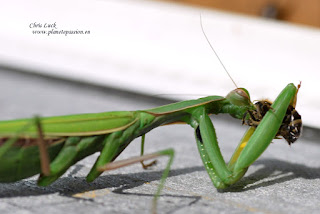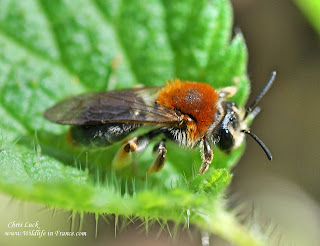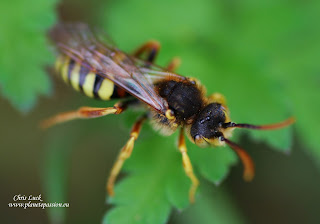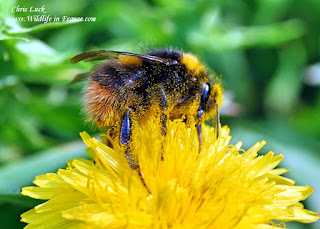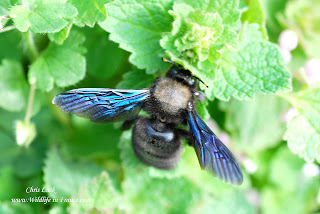Although the vast majority of Mantis species have their homes in tropical and sub-tropical climates France plays host to a dozen species most of which are in the Mediterranean region, some quite rare and only found in the coastal band. However the one that most people are familiar with, the Praying Mantis Mantis religiosa, can be found throughout all of France Europe as far north as Denmark
Without doubt people will be drawn to their two bulbous complex eyes but like many insects they also have three small simple eyes located between them which largely go unnoticed by most people. Although called “simple” they aren’t at all simple. (Human beings have “simple” eyes see link at the end). Their triangular head has powerful mandibles and can rotate through almost 180° allowing them to remain motionless while looking around. Their vernacular name comes from the manner in which they hold their spectacular forelegs with hands joined as if in prayer. The importance of these strangely developed forelegs is to defend against attack and to grab and hold prey, never for walking although they may be used in climbing to pull themselves up or hang on. The males will also use their forelegs to hold the female during copulation. Although rarely seen they also have beautiful wings and can make short flights.
Brown Praying Mantis
Their Life Cycle is an incomplete metamorphosis, egg, stages of nymph and then adult. They reach adulthood in late summer and mating takes place in August and September when the females release what is known as an Oothecae or Egg case. This is slowly forced out by the genital valves in the form of a mousse which hardens rapidly on contact with the air. In it will be contained some 200 to 300 eggs which will remain there until the following June when the nymphs will emerge in a thin membrane from the central band running down the egg case. This is quickly shed at which stage they already look just like very tiny adults and as they grow they will shed their skin another 6 times before reaching adulthood. Their wings fully develop just before the final moult. The adults die from late October until early December depending on region and weather conditions.
Mantis releasing egg sack
Mantis eating a fly
The act of mating itself can last many hours and although it isn’t always the case the female can and will eat the much smaller male when he has served his purpose, photo below.
Female eating male following copulation
Preferred habitat is rough grassland and scrub but gardens even in towns can be equally attractive for them provided they are insecticide free.
Diet is rich and varied with prey being captured using the forelegs which are armed with a series of angled spines that prevent the prey escaping. In their initial nymph stages they will eat aphids, baby spiders and other small insects but as they grow they take larger insects, flies, butterflies, bumble bees, solitary bees, anything in fact that settles within range of their forelegs. Even instances of small birds and hatchling snakes being eaten have been recorded.
Mantis eating one of my honey bees on a hive front
One more point is that there appears to be no obvious environmental reason for some being brown and some being green, both colours will be found in the same habitat and for both sexes and they will breed with each other.
Chris








